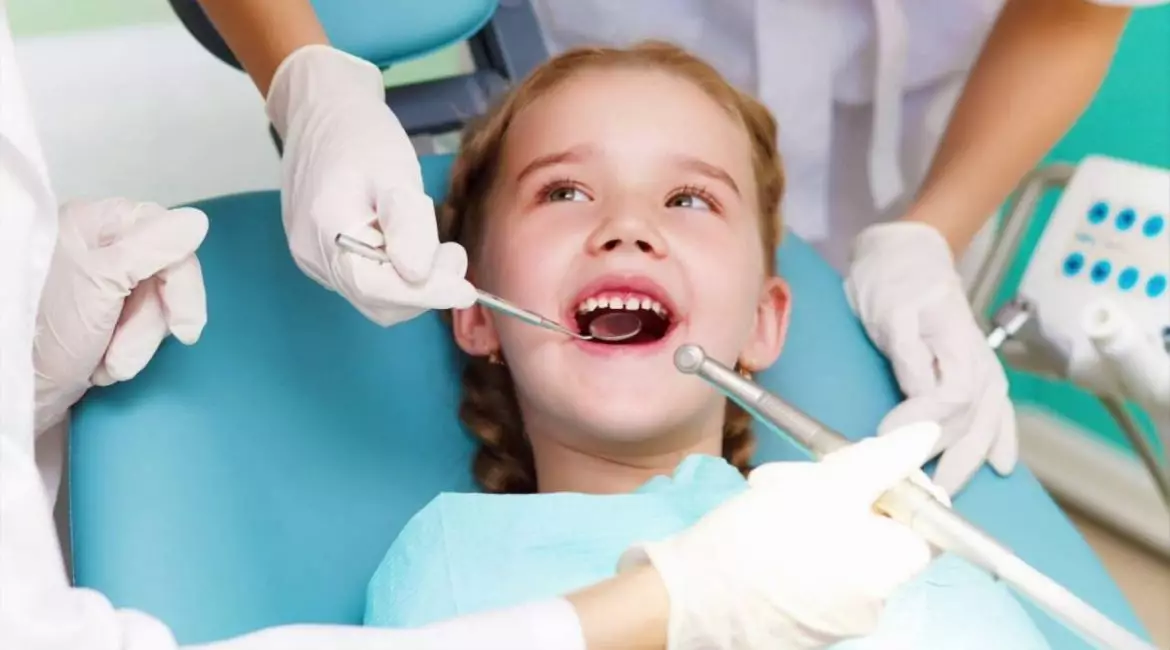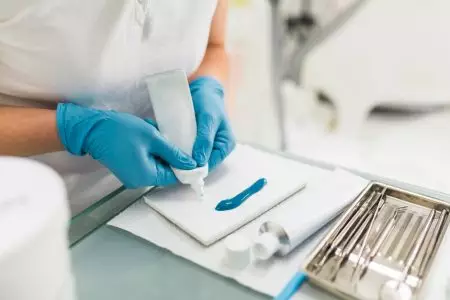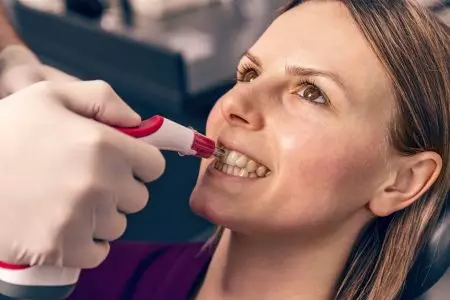Treatment of dental caries in children is one of the most popular services in paediatric dentistry, as about 80% of children under 7 years of age have this problem in their baby teeth. In this case, specific methods to combat the disease are chosen based on the stage of carious lesions.
Some parents mistakenly believe that children’s temporary teeth do not need to be treated. However, this approach can lead to serious problems. Caries in a child develops more rapidly than in an adult. In just a couple of months, the lesion can reach the hard tissue (pulp). A damaged tooth not only hurts, but is also a hotbed of chronic infection.
In Odessa, you can entrust the treatment of children’s caries to the doctors of the Dent-House Family Dentistry Clinic. Certified specialists carry out diagnostics and develop individual treatment plans for each patient. And also in “Dent-House” they know how to calm the baby before the procedure, which will be as fast and painless as possible.
Don’t delay your dental problems and book an appointment with a Dent-House dentist. You can do this by phone or by filling out the appointment form on the website. You can familiarise yourself with the prices for all services in the “Price” section.
What are the dangers of decayed baby teeth
Caries not only develops rapidly in a baby tooth, going from the initial form to a deep form in a few months, but also spreads to neighbouring dental units. If the multiplication of pathogens is not stopped in time, there is a high probability of losing the affected teeth.
Let’s list a number of problems that arise in a child if parents put off going to the dentist and treating tooth decay:
- Destruction of the hard tissues of baby teeth is no less dangerous than caries of permanent teeth. Especially since the disease can spread from a deeply affected temporary tooth to the embryo of a molar tooth.
- Painful sensations – teeth with carious lesions make themselves known by pain. At the initial stage, this is expressed in increased sensitivity of enamel, which reacts to sweet and sour products, to the pressure of chewing hard food. With the development of pathology, pain is more active and can occur spontaneously even without the presence of an irritant.
- Foci of chronic infection – carious cavities resulting from the softening of hard tissues become a place where bacteria accumulate. They, in turn, lead to irritation and infection of soft tissues. In case of weak immunity, complications in the form of ENT pathologies are possible.
- Low self-esteem – unsightly teeth can cause a child to develop an inferiority complex. In addition, baby teeth are important for the formation of the bite, facial skeleton and proper speech skills. Thus, oral health affects a child’s socialisation.
- Forced dietary restrictions – caries causes negative reactions to sweet and sour, cold and hot foods. As a result, favourite foods have to be excluded from the diet.
In order to avoid such troubles, it is necessary to seek dental care in a timely manner. If therapy is painless at the initial stage, dentists have to resort to anaesthesia when carrying out procedures in case of more serious damage.
Even the most neglected caries is treated in the clinic “Dent-House” in Odessa. Modern equipment, quality drugs and years of experience of specialists allow to minimise all unpleasant sensations accompanying the treatment process. The cost of therapy depends on the complexity of manipulations.
Causes of tooth decay in baby teeth
There is a popular belief that tooth decay appears in children because of their fondness for sweets. Indeed, simple sugars that accumulate on the surface of the tooth become a breeding ground for pathogens. But this is by no means the only reason why decay of baby teeth occurs.
Thus, pathogenic bacteria can get into the child’s oral cavity and from parents, for example, when using the same cutlery. Another factor is genetic predisposition. Both diseases of the mother during pregnancy and her bad habits (including smoking) can affect the health of the baby’s teeth.
In the first few years of life, tooth decay can be triggered by poor oral hygiene as well as prolonged contact with a bottle.
The enamel surface is more susceptible to damage when there is a lack of calcium and fluoride in the body. And the cleansing ability of saliva can be impaired by medications.
Types of childhood caries
There are four stages of tooth decay.
- At the initial stage, white spots are formed on the enamel without disturbing its integrity. There are also no unpleasant sensations. At this time it is easiest to prevent further development of pathology.
- Superficial caries is characterised by damage to the enamel, but the dentin is not affected. Initially white spots turn brown, sensitivity to sweet and sour tastes increases, and there may be short-term soreness in the damaged area.
- Medium caries destroys the dentin and leads to even more darkening of the enamel. Sometimes accompanied by intense pain when chewing hard food, eating cold and hot foods.
- Deep caries takes over the deep layers of dentin. A large part of the tooth is destroyed. The child may feel severe pain. If deep caries is left untreated, it will spread to the pulp. This leads to pulpitis, which requires more complex and expensive treatment.
Decay can occur on a single tooth or on several teeth at once. In the second case, we speak of multiple caries. The disease is also classified by the rate of infectious spread and the localisation of the lesion.
Caries treatment at Dent-Haus
There are different treatment protocols for each stage of the disease. For example, in the first stage, the dentist removes the stain and fills its place with fluoride. This helps to restore the enamel.
For superficial and middle stages, there are procedures that are performed under local anaesthetic. The affected areas are removed using a laser or a drill. The surface is then disinfected, dried and coated with a gel to ensure a good bond between the filling and the tooth. The filling is then placed. Young patients of Dent-House in Odessa are offered to choose the colour of the filling themselves. Coloured fillings are made of compomer material, which releases fluoride ions that stop the development of tooth decay.
At the last – deep – stage, more serious treatment is required. It includes the stage of cleaning the cavity. After thorough cleaning of the tooth, the cavity is disinfected and a special treatment pad is placed. It promotes the formation of secondary dentin. After that, a filling is placed, the surface is ground and polished.
The earlier caries is detected and treatment is started, the better the prognosis and the lower the cost of intervention. How much the procedure costs in Odessa will depend on the condition of the teeth. Also the cost is affected by the choice of filling.
Dent-Haus has a flexible pricing policy due to the large selection of materials. Therefore, the doctor can adjust the final price together with the patient, based on different treatment plans. All the nuances are discussed at the appointment. You can make an appointment to the dentist in Odessa on the specified phones or use the online appointment. Also on the site there are patient reviews and information about the services provided by the clinic.
Cost of services
Specialists

Furduy Ekaterina Sergeevna
Children's reception





